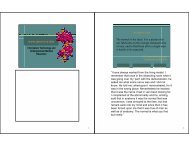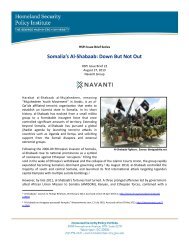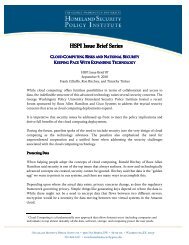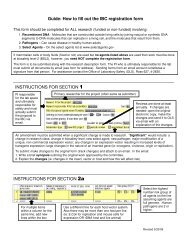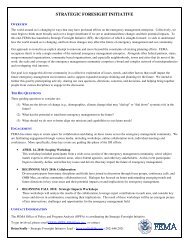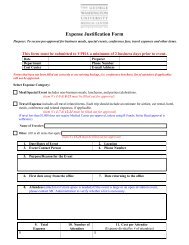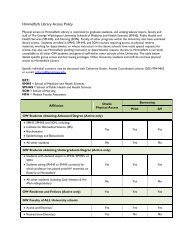Tritrophic Interactions and the Evolution of Diet Breadth in Insect ...
Tritrophic Interactions and the Evolution of Diet Breadth in Insect ...
Tritrophic Interactions and the Evolution of Diet Breadth in Insect ...
Create successful ePaper yourself
Turn your PDF publications into a flip-book with our unique Google optimized e-Paper software.
<strong>Tritrophic</strong> <strong>Interactions</strong> <strong>and</strong> <strong>the</strong> <strong>Evolution</strong><br />
<strong>of</strong> <strong>Diet</strong> <strong>Breadth</strong> <strong>in</strong> <strong>Insect</strong> Herbivores<br />
John T. Lill<br />
Department <strong>of</strong> Biological Sciences
3 rd (Carnivores)<br />
-<br />
+<br />
2 nd (Herbivores)<br />
-<br />
1 st (Producers)
Plants as Protection<br />
The Devil <strong>and</strong> <strong>the</strong> Deep Blue Sea<br />
“Plant-feed<strong>in</strong>g <strong>in</strong>sects live <strong>in</strong> a world dom<strong>in</strong>ated<br />
on <strong>the</strong> one h<strong>and</strong> by <strong>the</strong>ir natural enemies <strong>and</strong> on<br />
<strong>the</strong> o<strong>the</strong>r by a sea <strong>of</strong> food, that at best, is <strong>of</strong>ten<br />
nutritionally <strong>in</strong>dadequate <strong>and</strong>, at worst, is simply<br />
poisonous” (Lawton <strong>and</strong> McNeil, 1979)<br />
Recognized that for many <strong>in</strong>sects, choice <strong>of</strong> host plant<br />
(<strong>in</strong>dividual or species) may have important repercussions<br />
for its risk <strong>of</strong> attack by enemies
Ecological Trade<strong>of</strong>f<br />
Fitness <strong>in</strong> <strong>the</strong> presence <strong>of</strong> enemies<br />
Low quality, Low risk<br />
High quality, High risk<br />
Fitness <strong>in</strong> <strong>the</strong> absence <strong>of</strong> enemies
Euclea delph<strong>in</strong>ii development time<br />
90<br />
80<br />
Mean days to maturation<br />
70<br />
60<br />
50<br />
40<br />
30<br />
20<br />
10<br />
0<br />
Green<br />
Ash<br />
White<br />
Oak<br />
Hickory Beech Black<br />
Gum<br />
Red Oak Cherry Black<br />
locust<br />
Redbud<br />
ANOVA:<br />
F 7,83 = 14.08; P < 0.0001
100<br />
80<br />
Host plant-specific Parasitism<br />
Adoneta<br />
Isa<br />
Isochaetes<br />
Lithacodes<br />
Prolimacodes<br />
Parasitism (%)<br />
60<br />
40<br />
20<br />
0<br />
Beech White oak Red oak<br />
Host Plant




